Explore Krabi - Thailand Travel, Asia
As one of Thailand's most-visited tourist spots, Krabi attracts visitors from around the globe with its promise of adventure and relaxation. Known for its stunning limestone cliffs, crystal-clear waters, and picturesque islands, Krabi offers an idyllic escape from the hustle and bustle of city life. Whether you're drawn to its serene beaches, adventurous activities, or rich cultural experiences, Krabi is a destination that promises a memorable and diverse travel experience.
Population: Approximately 470,000 in 2018.
Economy: Krabi's economy thrives on tourism, agriculture, and fishing. Its stunning beaches and islands attract visitors, while local agriculture and seafood contribute to its growing local economy.
Landmarks: Famous for the Railay Beach, Phi Phi Islands, and Tiger Cave Temple (or Wat Tham Sua).
Thailand
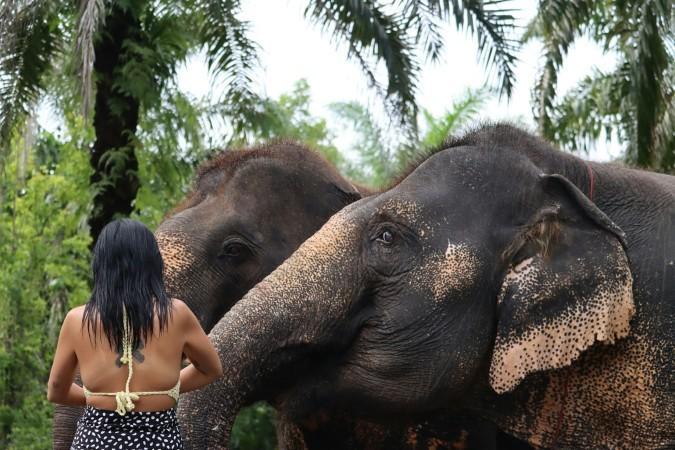
Overview of Krabi
History & Culture Influence
Krabi’s rich history and cultural heritage are woven into the very fabric of its landscape. The region’s historical roots trace back to ancient times, influenced by various Thai kingdoms and trade routes. The legacy of these early civilizations can still be seen in Krabi’s temples, traditional architecture, and local customs. One of the most prominent cultural landmarks is the Wat Tham Sua, or Tiger Cave Temple. This revered site offers a glimpse into Thailand’s spiritual past and is known for its stunning views and challenging climb. Krabi's culture is also heavily influenced by its maritime history. As a significant port in ancient times, it has seen a blend of cultural influences from both mainland Thailand and neighboring countries.
Interaction with The Locals
Krabi, a charming province in southern Thailand, has a population of approximately 470,000 residents. The local community is known for its warm hospitality and friendly demeanor, reflecting traditional Thai values and customs. The population includes a mix of ethnic Thais, with a significant presence of diverse cultural groups that contribute to the region’s rich heritage. Krabi's residents are deeply connected to their natural surroundings, engaging in traditional livelihoods such as fishing and farming alongside the growing tourism industry.
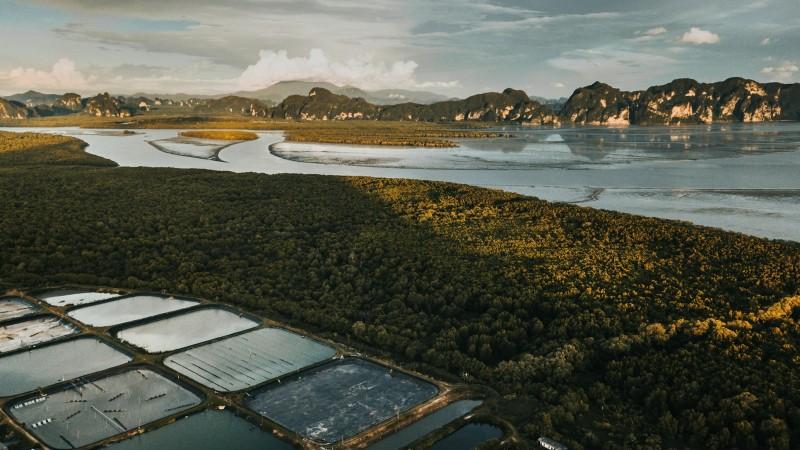
Krabi's natural beauty - © Andrzej Suwara
Top Attractions in Krabi
Krabi is brimming with attractions that cater to all types of travelers, from stunning beaches to adventurous excursions, the region offers a diverse range of activities.
Railay Beach
Railay Beach, which can only be reached by boat, is a beautiful paradise known for its spectacular limestone cliffs, crystal-clear seas, and fluffy white sand. It's divided into three main areas: Phra Nang Beach, known for its stunning cave shrine and vibrant rock formations; Ao Phra Nang, a popular spot for sunbathing and swimming; and Tonsai Beach, a favorite among rock climbers. Railay’s unique setting and tranquil ambiance make it a must-visit destination.
Phi Phi Islands
The Phi Phi Islands, located about 45 minutes by boat from Krabi, are renowned for their breathtaking scenery and vibrant marine life. Phi Phi Don, the archipelago's main island, is noted for its vibrant environment and magnificent beaches, as is Phi Phi Leh, which is home to the famed Maya Bay, where "The Beach" was filmed. The islands offer exceptional snorkeling, diving, and opportunities to explore picturesque bays and hidden coves.
Wat Tham Sua (Tiger Cave Temple)
Nestled in the forested hills near Krabi Town, the Tiger Cave Temple is a significant Buddhist site known for its impressive cave monastery and challenging climb. Visitors can ascend 1,237 steps to reach the summit, where they are rewarded with panoramic views of Krabi's lush landscapes and a large golden Buddha statue. The temple’s serene environment and stunning vistas make it a spiritual and scenic highlight.
Sa Morakot (Emerald Pool) & Sai Sia (Blue Pool)
Located in the Thung Teao Forest Natural Park, the Emerald Pool (Sa Morakot) and the Blue Pool (Sai Sia) are natural hot springs surrounded by lush jungle. The Emerald Pool is renowned for its vibrant green water, ideal for a refreshing swim, while the Blue Pool, a short walk away, features striking blue waters and is a beautiful spot for photos. The surrounding park offers a scenic trail through tropical forest, enhancing the experience.
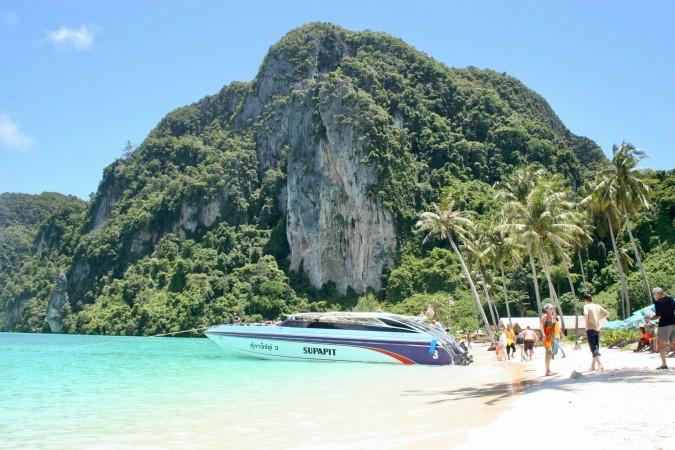
Phi Phi Islands - © Mil Amirian
Must-Try Dishes in Krabi
Krabi is a foodie's paradise, with a delectable selection of native specialties that embody the spirit of Thai cuisine.
- Pad Thai: This iconic Thai stir-fry dish features rice noodles sautéed with eggs, tofu or shrimp, bean sprouts, and peanuts, all tossed in a tangy tamarind sauce. It’s a flavorful and satisfying dish that’s a staple in Thai cuisine.
- Tom Yum Goong: Known for its distinctive hot and sour flavors, Tom Yum Goong is a spicy shrimp soup infused with lemongrass, lime leaves, galangal, and chilies. It’s a perfect Thai dish that balances heat with refreshing citrus notes.
- Massaman Curry: A rich and aromatic curry, Massaman Curry blends tender chunks of meat (often beef or chicken) with potatoes, peanuts, and a blend of spices including cinnamon and cloves. This dish is a perfect example of Thailand’s ability to incorporate diverse influences into its cuisine.
- Som Tum (Green Papaya Salad): This zesty salad combines shredded green papaya with tomatoes, green beans, peanuts, and a spicy lime dressing. It’s a refreshing and crunchy dish that offers a burst of flavors and textures.
- Moo Pad Krapow: A savory stir-fry made with minced pork, Thai basil, garlic, and chilies, Moo Pad Krapow is often served with a fried egg on top. It’s a popular street food that offers a satisfying mix of spicy and savory tastes.
- Khao Mok Gai: Often referred to as Thai biryani, Khao Mok Gai is a fragrant yellow rice dish cooked with spices and served with tender pieces of chicken. It’s a flavorful and hearty option for those seeking a comforting meal.
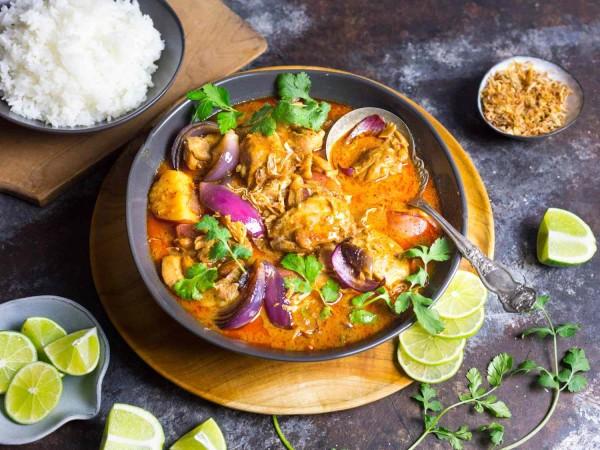
Massaman Curry - © Serious Eats
Festivals & Local Celebrations
Krabi's vibrant cultural heritage is highlighted by a variety of festivals and local celebrations throughout the year. These events provide visitors a unique chance to experience the region's traditions and community spirit.
- Krabi River Festival: Held annually in Krabi Town, this lively festival celebrates the region's rich cultural heritage with traditional performances, parades, and food stalls. It’s a great way to experience local music, dance, and cuisine.
- Loy Krathong: Celebrated across Thailand, Loy Krathong takes place in November and involves floating decorative krathongs (small boats made of banana leaves) on water to honor the goddess of water. Krabi's coastal setting offers a picturesque backdrop for this enchanting festival.
- Songkran Festival: Known as the Thai New Year, Songkran is celebrated in April with water fights and festive activities. In Krabi, the festival is marked by lively street celebrations and traditional rituals to welcome the new year with joy and blessings.
- Phi Ta Khon (Ghost Festival): This colorful and unique festival, also known as the Ghost Festival, involves locals dressing in elaborate ghost costumes and masks. While not native to Krabi, nearby regions celebrate it, offering an intriguing cultural experience for visitors.
- Chinese New Year: Krabi’s Chinese New Year celebrations reflect the significant Chinese influence in the region. Festivities include dragon dances, traditional music, and a variety of Chinese-inspired foods.
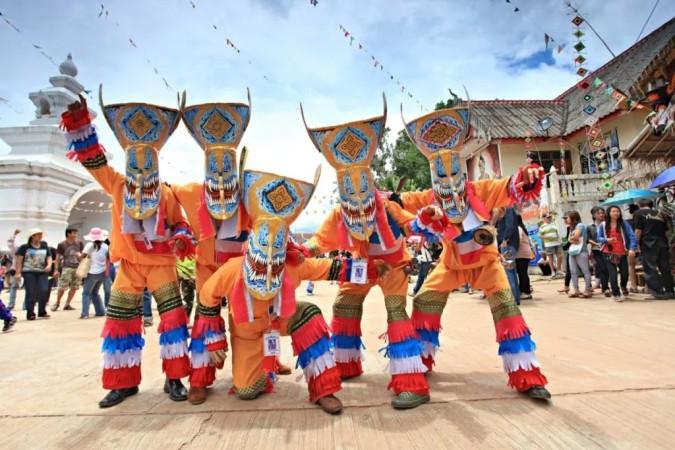
Phi Ta Khon (Ghost Festival) - © Thailand NOW
What to Do in Krabi
Krabi offers a wide range of activities for every type of traveler, whether you're seeking adventure, relaxation, or cultural experiences.
- Island Hopping in Krabi: Explore Krabi’s beautiful islands, including the Phi Phi Islands and Hong Islands. Enjoy snorkeling, swimming, and relaxing on pristine beaches.
- Rock Climbing: Railay Beach is renowned for its excellent rock climbing spots, with routes suitable for both beginners and experienced climbers. The dramatic limestone cliffs provide a stunning backdrop for this thrilling activity.
- Snorkeling in Krabi: Discover the vibrant underwater world of Krabi with snorkeling and diving trips. Coral reefs, colorful fish, and diverse marine life await in crystal-clear waters.
- Kayaking: Paddle through serene mangroves and limestone formations, exploring hidden coves and tranquil bays. Kayaking in Krabi offers a peaceful way to connect with nature.
- Trekking in Krabi: Venture into Krabi’s lush jungles and national parks, such as Khao Phanom Bencha National Park. Enjoy scenic hikes to waterfalls, scenic viewpoints, and diverse wildlife.
- Wellness Retreat: Unwind with relaxing traditional Thai massage treatments and wellness therapies. Krabi’s resorts and wellness centers offer massages, facials, and other rejuvenating services.
Shopping in Krabi
Krabi’s shopping options offer a blend of local markets, boutiques, and souvenir shops, making it a great destination for collecting unique Thai souvenirs.
- Krabi Town Walking Street: This bustling market is a must-visit for shopping enthusiasts. It features a variety of stalls selling local crafts, clothing, accessories, and street food. The lively atmosphere and diverse offerings make it a perfect spot for finding unique souvenirs.
- Ao Nang Night Market: Located in Ao Nang, this night market is known for its vibrant selection of food, clothing, and handicrafts. Enjoy browsing through various stalls and sampling local snacks and delicacies.
- Krabi Weekend Market: Held on weekends in Krabi Town, this market offers an array of products, including fresh produce, traditional Thai snacks, and handmade goods. It's a terrific location to learn about local culture and buy one-of-a-kind souvenirs.
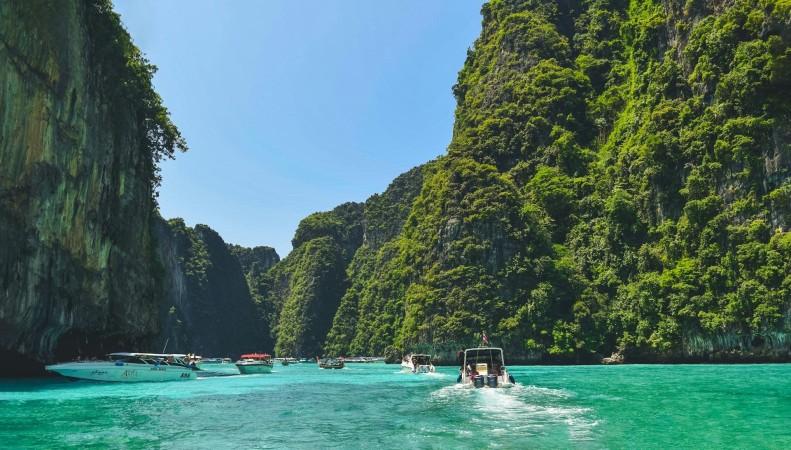
Island Hopping in Krabi - © Nopparuj Lamaikul
Weather in Krabi: Best Time to Visit
Krabi's tropical climate features distinct seasons, each offering unique experiences for tourists. Understanding the seasonal trends can help you plan your visit to make the most of your stay.
Dry Season in Krabi
The dry season is the peak time for tourism in Krabi. With warm, sunny weather and minimal rainfall, this period is perfect for beachgoers and outdoor enthusiasts. Temperatures generally range from 25°C to 32°C (77°F to 89°F), creating ideal conditions for activities such as island hopping, snorkeling, and exploring the region's natural beauty. Popular attractions like Railay Beach and the Phi Phi Islands are bustling with visitors eager to enjoy the clear skies and turquoise waters. Book accommodations and tours in advance, as this is the high season and places fill up quickly.
Wet Season in Krabi
During the rainy season, Krabi experiences frequent showers and high humidity, with temperatures ranging from 24°C to 31°C (75°F to 88°F). While this period sees fewer tourists, it offers a different kind of allure. The rains bring lush green landscapes and dramatic coastal scenery, making it a great time for eco-tourism and exploring waterfalls. Many visitors find the quieter beaches and lower accommodation prices appealing. Keep in mind that while showers are common, they are usually brief, and the rain often occurs in the late afternoon or evening.
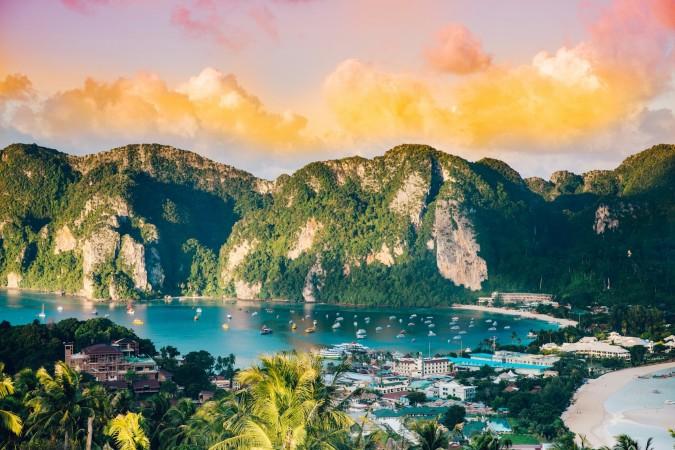
Every season is the great season to explore Krabi - © Evan Krause
Essential Travel Information
Getting Around Krabi
- Taxis and Tuk-Tuks: Taxis and tuk-tuks are common modes of transportation in Krabi. Taxis are typically metered, while tuk-tuks may require negotiation for fares. These options are convenient for short trips and local travel.
- Songthaews: These shared pickup trucks operate as communal taxis, offering an affordable way to travel between towns and popular destinations. They follow fixed routes and are a popular choice for both locals and tourists.
- Scooters and Motorbikes: Scooters or motorbikes are a popular option for exploring Krabi at your own pace. It’s a cost-effective way to reach beaches, markets, and other attractions.
- Boats and Ferries: Given Krabi’s coastal location, boats and ferries are essential for island hopping and reaching nearby islands like the Phi Phi Islands. Regular services are available from Krabi Town and Ao Nang to various destinations.
- Cars: This option allows you to explore Krabi’s attractions and surrounding areas comfortably. Rental agencies are available throughout Krabi for your services, and driving is straightforward with clear road signs.
ATM & Banking Services
Krabi offers convenient access to banking services and ATMs throughout the region. Visitors will find numerous ATMs in key tourist areas, such as Krabi Town and Ao Nang, which accept international credit and debit cards for cash withdrawals. Banks and currency exchange services are also readily available, providing options for cash transactions and currency conversion. Credit and debit cards are widely accepted at most hotels, restaurants, and shops, though it's advisable to carry some cash for smaller establishments and market purchases.
Where to Stay in Krabi
- Luxury Resorts: For those seeking high-end amenities and exceptional service, Krabi’s luxury resorts provide lavish stays with beachfront locations and world-class facilities. These resorts often feature spacious rooms, private villas, and top-notch dining options, making them ideal for a luxurious escape.
- Mid-Range Hotels: Comfortable and well-appointed, mid-range hotels offer good value with a range of amenities including pools, restaurants, and convenient locations. These accommodations strike a balance between comfort and affordability, catering to travelers looking for quality without the premium price.
- Budget Lodgings: Budget travelers will find a variety of guesthouses, hostels, and small hotels that offer essential amenities at an affordable price. These options provide a basic yet comfortable stay, often with a social atmosphere and proximity to local attractions.
- Boutique Hotels: Boutique hotels in Krabi offer unique and personalized experiences, with distinctive decor and tailored services. These smaller, charming establishments provide an intimate setting and a touch of local character, perfect for travelers seeking something different.
- Beachfront Villas: For a private and scenic retreat, beachfront villas offer direct access to the sand and stunning ocean views. These accommodations are ideal for those wanting a more secluded and upscale experience, often featuring private pools and exclusive amenities.
Articles for you

Explore Yala National Park - Sri Lanka Travel, Asia
Tucked away in Sri Lanka’s southeastern corner, Yala National Park is where wild nature meets deep tradition. Known worldwide for its leopard population, the park is also home to elephants, sloth bears, crocodiles, and hundreds of bird species. Beyond wildlife, Yala opens doors to a cultural landscape dotted with ancient temples, Buddhist ruins, and coastal villages. For travelers seeking more than just a safari, Yala offers a chance to explore eco-tourism, local communities, and sacred heritage sites.
Population: The Yala National Park area doesn’t have a human population.
Economy: The economy around Yala National Park thrives on a blend of eco-tourism, agriculture, and local services. Safari tours, eco-lodges, and cultural experiences drive steady income for nearby towns like Tissamaharama and Kataragama, supporting thousands of families.
Landmarks: Famous for Block I of Yala and wildlife encounters, including elephants, sloth bears, crocodiles, and exotic bird species.

Explore Galle - Sri Lanka Travel, Asia
Nestled on Sri Lanka’s southern coastline, Galle is a vibrant city where history meets the sea. Its cobbled streets, colonial architecture, and serene beaches make it a must-visit destination for travelers seeking a blend of culture, adventure, and relaxation. A UNESCO World Heritage site, Galle captivates visitors with its Dutch Fort, bustling markets, and friendly locals. Whether you’re exploring the ramparts at sunset or savoring fresh seafood by the shore, Galle promises an unforgettable journey into Sri Lanka’s heritage.
Population: Approximately 113,000 in 2023.
Economy: Galle’s economy thrives on tourism, trade, and fisheries. The city’s historic fort, colonial architecture, and coastal charm draw thousands of international visitors each year, making tourism its main economic driver. Fishing remains vital for local livelihoods, supplying fresh seafood across the region.
Landmarks: Famous for the Galle Fort, Dutch Reformed Church & Maritime Museum, and Unawatuna Beach.

Explore Bentota - Sri Lanka Travel, Asia
Nestled along Sri Lanka’s southwestern coast, Bentota is a tropical paradise that blends golden beaches, vibrant culture, and thrilling adventures. Famous for its calm waters, luxury resorts, and scenic river estuary, Bentota has become a top destination for travelers seeking both relaxation and authentic experiences. From serene beach walks at sunrise to adrenaline-pumping water sports, this coastal town offers a perfect balance of leisure and exploration. With its proximity to Colombo and Galle, Bentota is easy to reach, making it an ideal stop for both short escapes and extended holidays.
Population: Approximately 37,000 in 2023.
Economy: Bentota’s economy thrives mainly on tourism, which drives local businesses such as hotels, restaurants, and wellness retreats. The town also benefits from fishing, coconut cultivation, and handicrafts like wood carving and batik textiles. Many residents rely on the growing demand for water sports and Ayurvedic treatments, making tourism the backbone of both income and employment in the area.
Landmarks: Famous for Bentota Beach, Bentota River Safari, and Kande Vihara Temple.

Explore Mirissa - Sri Lanka Travel, Asia
Mirissa is a charming coastal town on Sri Lanka’s southern shoreline. Known for its golden beaches, turquoise waters, and vibrant marine life, it has become a must-visit stop for travelers exploring the island. Many come for whale watching, surfing, and sunset views at Coconut Tree Hill, but Mirissa offers much more than postcard beauty. The fishing boats you see anchored by the bay carry generations of stories. Local traditions, delicious cuisine, and a laid-back rhythm of life shape every visitor’s experience.
Population: Approximately 4,700 in 2023.
Economy: Mirissa’s economy is largely shaped by its coastal location. Fishing has long been the backbone of local livelihoods, with generations relying on the Indian Ocean for income. In recent decades, tourism has become the main driver of growth, thanks to whale watching, surfing, and beachside hospitality.
Landmarks: Famous for Mirissa Beach, Coconut Tree Hill, and Parrot Rock Bridge.

Explore Nuwara Eliya - Sri Lanka Travel, Asia
Tucked away in the Central Highlands of Sri Lanka, Nuwara Eliya is often called “Little England”. With its rolling tea plantations, cool misty mornings, and colonial charm, this mountain town feels like a step into another world. Travelers come here to breathe fresh air, walk through flower gardens, sip the finest Ceylon Tea, and enjoy a pace of life far from the island’s busy cities. Whether you’re drawn by scenic landscapes, heritage architecture, or the warmth of its people, Nuwara Eliya is a destination that blends nature, culture, and history in perfect harmony.
Population: Approximately 781,000 in 2023.
Economy: Nuwara Eliya’s economy thrives mainly on tea production, as it sits in the heart of Sri Lanka’s central highlands, famous worldwide for Ceylon Tea. The city also benefits from a growing tourism industry, attracting visitors with its colonial charm, cool climate, and scenic landscapes.
Landmarks: Famous for Gregory Lake, Hakgala Botanical Garden, and Victoria Park.

Explore Sukau - Malaysia Travel, Asia
Nestled on the banks of the Kinabatangan River in Sabah, Malaysian Borneo, Sukau is a destination where wildlife, culture, and conservation come together. Known as one of Asia’s top spots for river safaris and eco-tourism, this quiet village offers a front-row seat to encounters with Bornean orangutans, pygmy elephants, proboscis monkeys, and exotic birdlife.
Population: Approximately 1,400 in 2019.
Economy: Sukau’s economy is shaped by its riverine location and natural resources. Traditionally, the Orang Sungai community relied on fishing, small-scale farming, and forest gathering for their livelihood. Today, the village has shifted toward eco-tourism, with river cruises, jungle trekking, and homestays providing income.
Landmarks: Famous for the Kinabatangan River cruises, Gomantong Caves, and Ox-bow lakes and wetlands.
